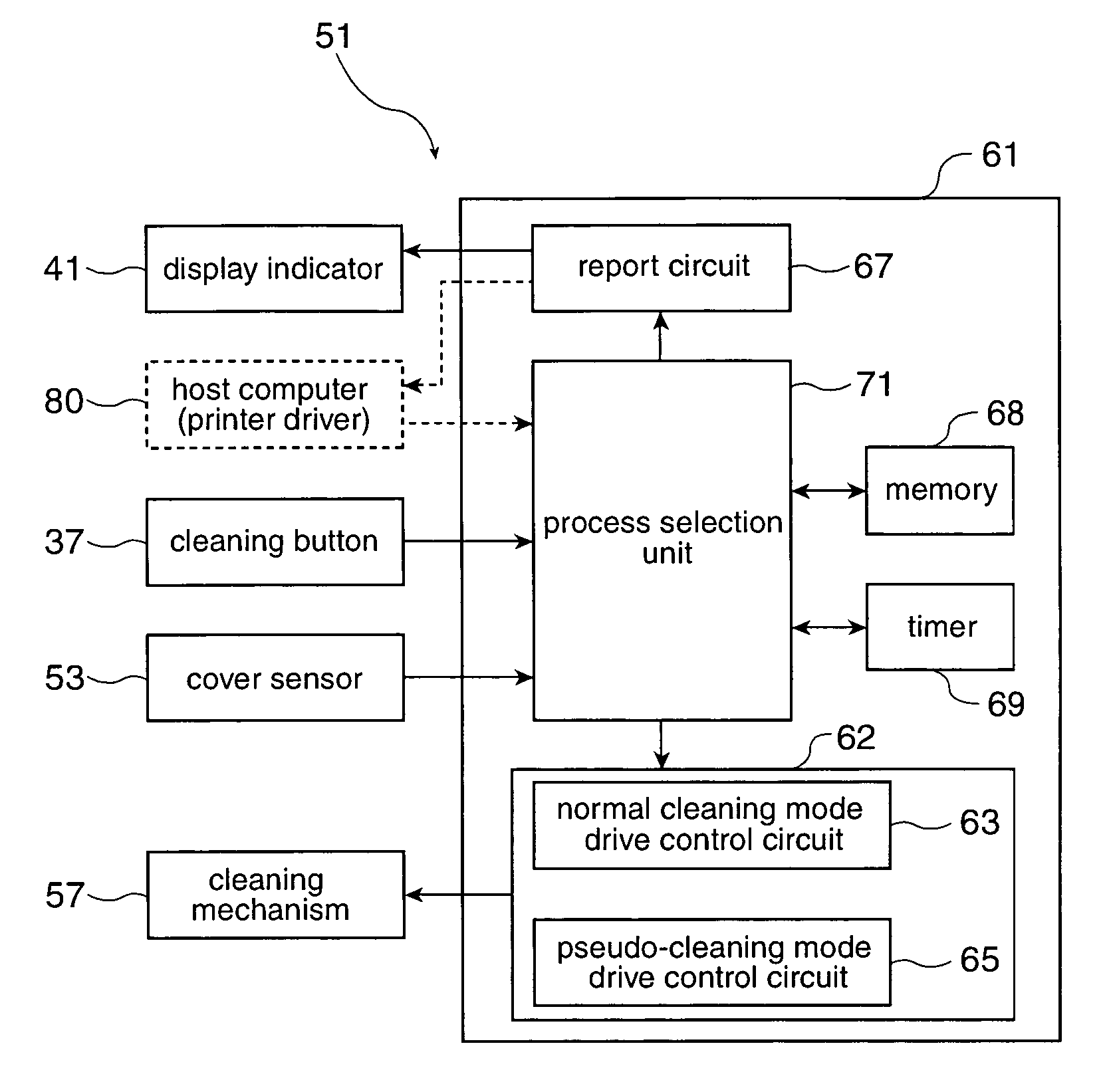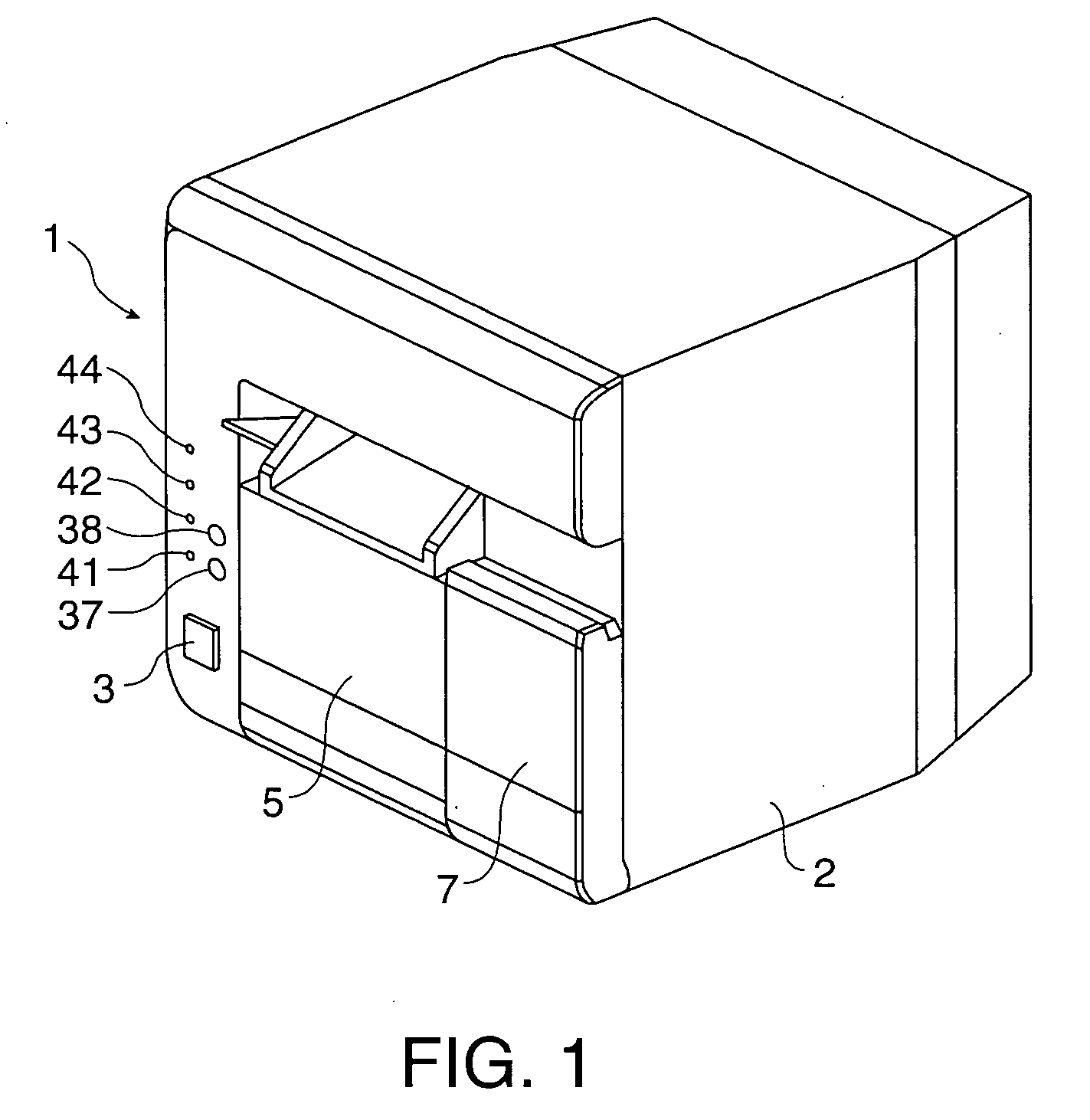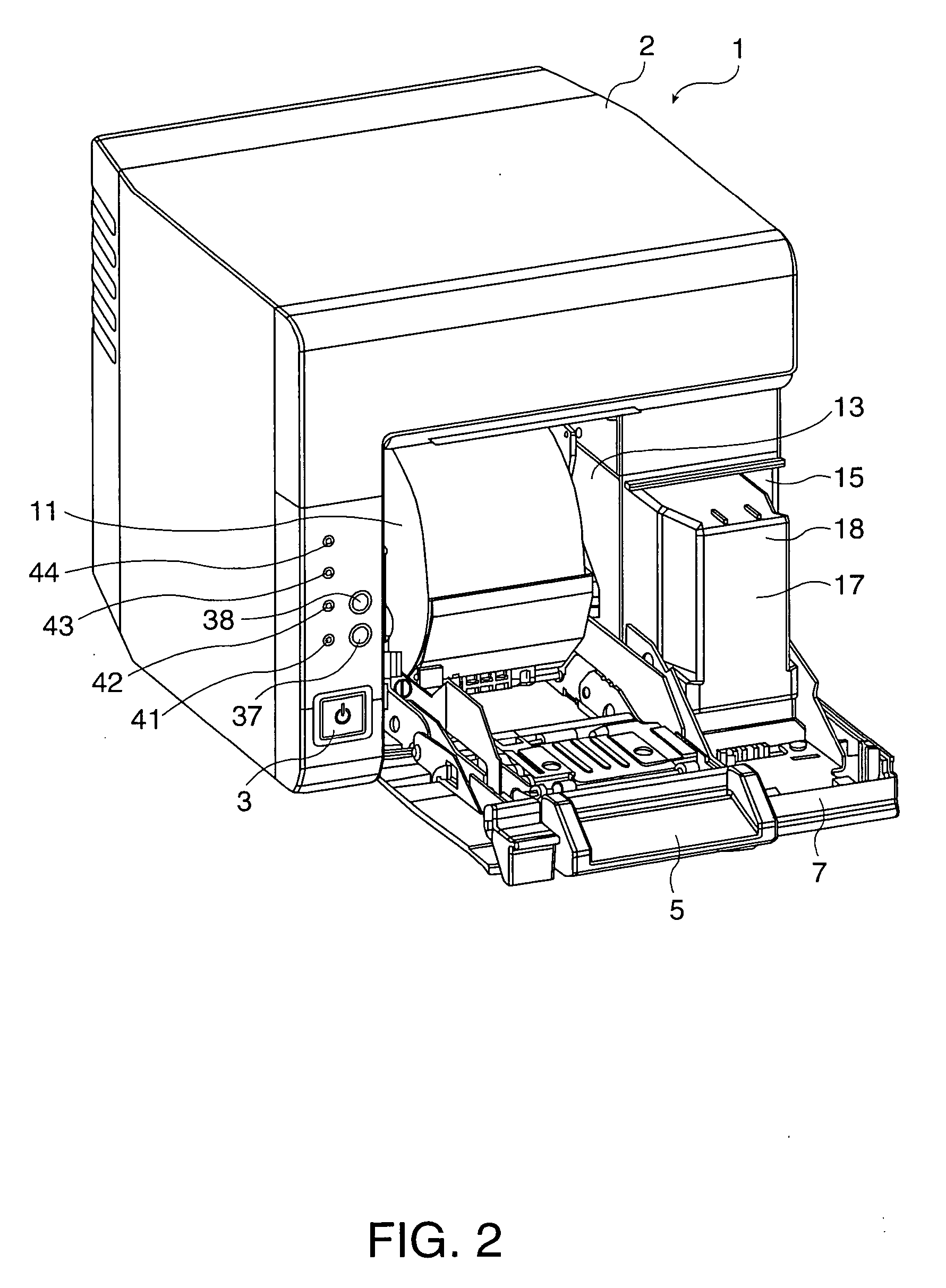Cleaning device, inkjet printer, and an inkjet printer cleaning method
a cleaning device and inkjet printer technology, applied in printing and other directions, can solve the problems of printing defects, drop dots, and inability to completely prevent the viscosity increase of ink in the nozzle from increasing, and achieve the effect of suppressing ink was
- Summary
- Abstract
- Description
- Claims
- Application Information
AI Technical Summary
Benefits of technology
Problems solved by technology
Method used
Image
Examples
Embodiment Construction
[0037] Preferred embodiments of a cleaning device and a cleaning method for an inkjet printer according to a preferred embodiment of the present invention are described below with reference to the accompanying figures.
[0038] An inkjet printer 1 according to this embodiment of the invention prints to roll paper 11 using a plurality of colors of ink. As shown in FIG. 1, a roll paper cover 5 and ink cartridge cover 7 are disposed to the front of the case 2, and a power switch 3, cleaning button 37, feed switch 38, and four indicators 41 to 44 are disposed at the front left part of the case 2.
[0039] As shown in FIG. 2, opening the roll paper cover 5 exposes the roll paper compartment 13 where the roll paper 11 is held, and thus enables loading and replacing the roll paper 11.
[0040] As shown in FIG. 3, a carriage 23 carrying a print head 21 is disposed above the roll paper compartment 13. The carriage 23 is supported to move freely widthwise to the paper on a guide member 25 extending...
PUM
 Login to View More
Login to View More Abstract
Description
Claims
Application Information
 Login to View More
Login to View More - R&D
- Intellectual Property
- Life Sciences
- Materials
- Tech Scout
- Unparalleled Data Quality
- Higher Quality Content
- 60% Fewer Hallucinations
Browse by: Latest US Patents, China's latest patents, Technical Efficacy Thesaurus, Application Domain, Technology Topic, Popular Technical Reports.
© 2025 PatSnap. All rights reserved.Legal|Privacy policy|Modern Slavery Act Transparency Statement|Sitemap|About US| Contact US: help@patsnap.com



